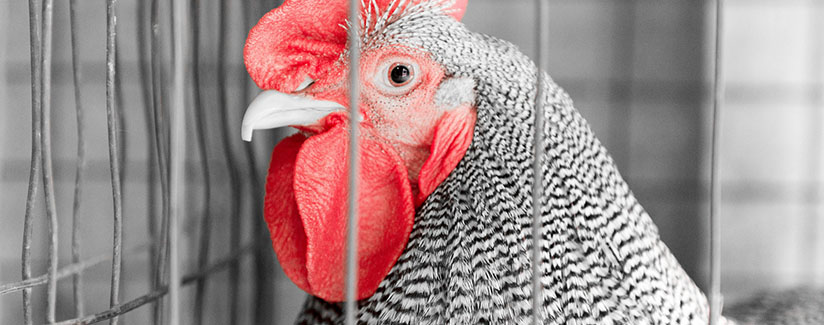
Does Hen Housing Matter In Egg Safety?
02/03/2012
Researchers have been looking at the food safety implications of different hen housing methods, but research is underway in the United States. Researcher Dr. Deana Jones is studying the potential for food safety issues based on hens in different housing systems, and Dr. Jeroen Dewulf, a researcher in Europe, pointed out the vast differences in European egg production compared with United States egg production, and that the European research should be used cautiously to predict food safety in eggs in the U.S.
The 2010 Salmonella outbreak in eggs is a distant memory for many, but food safety is always top of mind for us. To follow up on our earlier posts about housing systems, we wanted to know if the type of housing (cage-free, enriched or caged) played a part in food safety.
We interviewed Dr. Deana Jones, USDA Agricultural Research Service, and Dr. Jeroen Dewulf, Belgium, about the safety of eggs from different housing systems.
Are eggs from free-range and cage-free hens safer than from caged hens?
Dr. Jones:
At this time, there is no clear-cut scientific evidence to support either side. That is an area of research that we are working on now. We are doing research on the microbiology of eggs from conventional and alternative production methods in order to glean how we can ensure the safety of all the eggs reaching the consumer. We want to have a safe egg supply in the United States, and that is our research goal.
Dr. Dewulf:
I want to emphasize that our results are valid for Europe. We have learned that production systems in the U.S. are different than they are in Europe. I think that is an important fact. In Europe, we’ve looked at the effects of alternative housing systems on layers in regards to the prevalence of zoonotic pathogens, especially Salmonella. We found less Salmonella in free-range production systems and floor-raised production systems. We define floor-raised housing systems as chickens that are inside, in buildings, but all on the floor, not in cages. Free-range systems are defined as floor-raised, but the chickens also have the opportunity to go outside.
If you took a hen out of the cage, would her eggs have less chance of Salmonella?
Dr. Jones:
We are working on an answer, and it is part of our five-year-project plan. I’m working with three scientists whose primary function is to look at the effects of housing conditions, immunology of the hens, microbiology of the eggs and the resulting quality of the eggs.
There is historic research that has been published throughout the years, dealing with factors that contribute to Salmonella in table egg production. Almost all of that work has focused on conventional cage production. So you can’t draw an inference to what’s going to happen in an alternative method. But you can see factors that have contributed to Salmonella instances in cage production.
Dr. Jones referenced 2011 Poultry Science 90:251-262, which states, “The current white paper attempted to provide insight into how changing the U.S. egg industry from one that houses its hens in conventional laying cages to furnished cages, aviaries, or a cage-free system affects the safety and quality of eggs produced in these different environments. There is no general consensus demonstrating the superiority of one housing situation over another regarding food safety and egg quality.”
Dr. Dewulf:
From a European perspective, that is what we’ve seen. We thought about the reasons and were able to identify a number of risk factors. Older caged housing systems are at a higher risk, as are larger flocks.
What is the industry doing to help prevent outbreaks of Salmonella in layers?
Dr. Jones:
By July 9, 2012, every producer in the U.S. that has more than 3,000 hens on site will be required to follow the federal law aiming at reducing Salmonellaincidence on the farm and during transportation of eggs. Additionally, it’s important to note that egg farmers are very concerned about wanting to have safe eggs. Farmers don’t want people to get sick, and they want to stay in business. Egg farmers are looking to do the best they can.
If I’m really concerned about Salmonella in my eggs, what should I do to minimize the risk?
Dr. Jones:
Always use safe handling practices, refrigerate your eggs, wash your hands, and prevent cross-contamination. Salmonella does not handle heat very well; therefore, if you cook it thoroughly, you’re going to kill it. Safe handing techniques will help to minimize the consumer’s risk.
For more about safe handling practices, please visit the Food Safety and Inspection Service.
The Coalition for Sustainable Egg Supply is currently conducting a commercial-scale study of housing alternatives for egg-laying hens in the U.S. The first research flock was placed in April 2011. The study will be replicated over two flocks with conclusion in 2014 and results reporting to follow.
“Annapolis Valley Exhibition – 2013” by Korona Lacasse is licensed under CC BY.


























